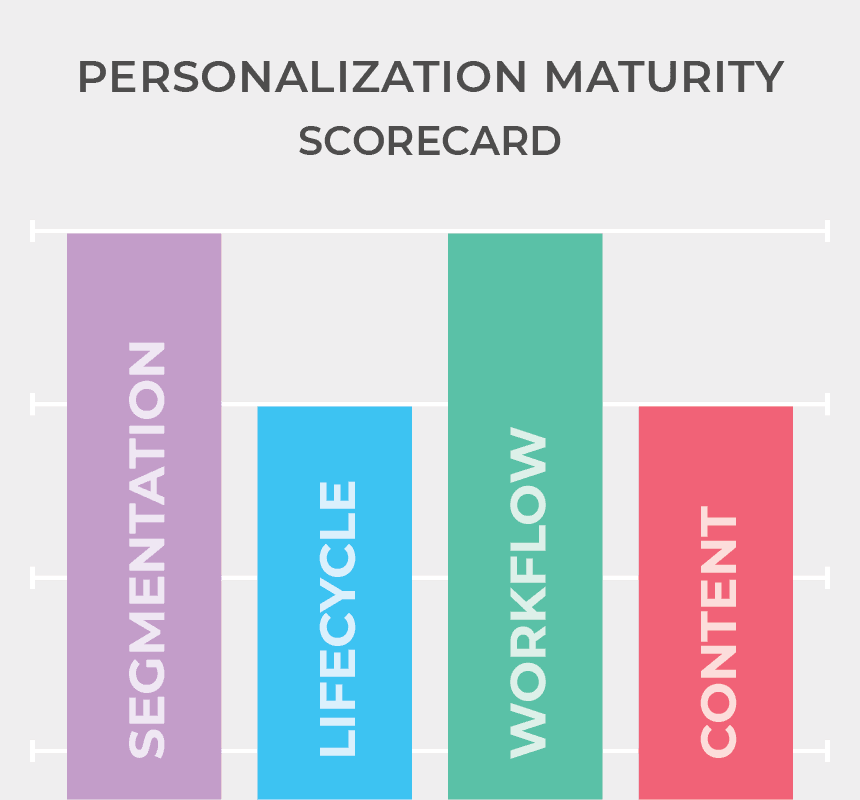Gut checks are good. They keep you grounded and help you level set to ensure you aren’t going off track. For marketers, the gut check is crucial to understanding if your campaigns are achieving what you intended for them to achieve.
And for the majority of marketers today, the top priority is personalization—connecting with the customer at an individual level to create a memorable experience worth revisiting over and over again. Sometimes, though, life (and data and resources and countless other things) can get in the way.
As the holiday season approaches, it’s the perfect time to conduct a personalization gut check, and we’ve got you covered. The whole team at Iterable is excited to introduce to you a valuable new tool: our Personalization Maturity Model.
By taking a quick quiz and sharing your contact information to receive your scorecard, you will be able to better understand where you stand with regard to the core pillars of personalization. Your results will allow you to better assess your current personalization strategies and identify opportunities for growth.
Here’s a bit more about what you can expect.
About the Personalization Maturity Model
As mentioned, the model is based upon the four core pillars of personalization:
- User Segmentation
- Lifecycle Mapping
- Workflow Building
- Dynamic Content
These four pillars are integral to understanding how to maximize your data and resources for enhanced personalization.
Through our experience working with hundreds of industry-leading brands, we have found that personalized campaigns typically fall within three levels: Reactive Personalization, Proactive Personalization, and Individualization.
Keep reading for a brief description of each of these levels so you can start anticipating where your marketing strategies might sit today.
Level 1: Reactive Personalization
Reactive personalization is derived from user attributes and event data. It’s a one-to-many approach and is applicable to large audience segments. These are the easiest tactics to implement using customer attributes like first name, event milestones (e.g. birthdays), or system events like cart abandonment.
Level 2: Proactive Personalization
Proactive personalization combines user and event data with externally managed data. It’s a one-to-some approach and is applicable to smaller, targeted segments. This incorporates customer behaviors and third-party data and is more resemblant of individually targeted messaging (e.g. geo-specific services of personal interest).
Level 3: Individualization
Individualization is formed from dynamic relationships between user attributes and detailed product data. It’s a one-to-one approach that appeals specifically to each individual. This takes into account various profile, behavioral, lifecycle data points to create user-specific dynamic content experiences that are unique to each user.
See How You Score
So what are you waiting for? Your gut knows it’s always a good time to assess where you are and where you’re headed, especially when it comes to personalization.
Whether you’re just getting started at Level 1 or leading the charge in Level 3, our Personalization Maturity Model can help show you where there’s room for improvement, so you can take the next step.































